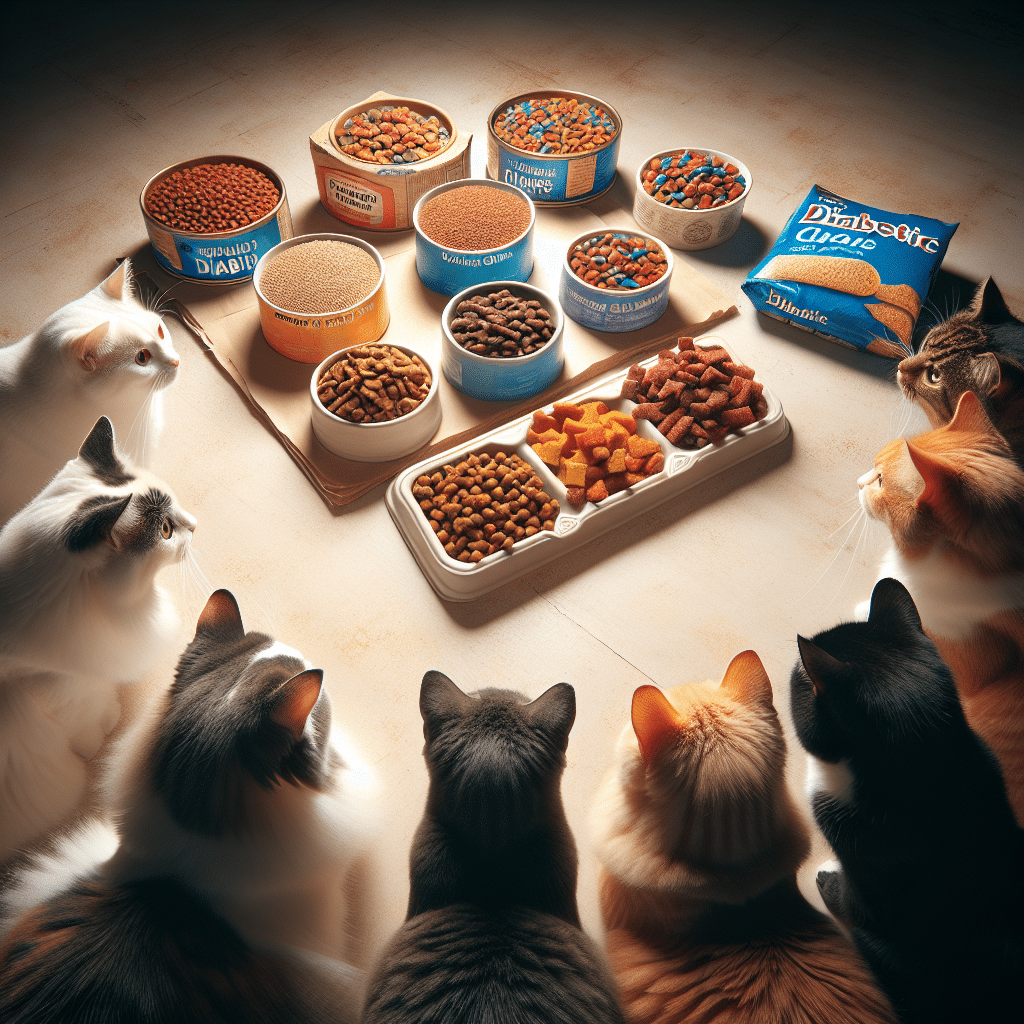Understanding Grain-Free Cat Food for Diabetic Cats
What is Grain-Free Cat Food?
Grain-free cat food is formulated without common grains such as wheat, corn, and soy. Instead, these diets typically utilize alternative carbohydrate sources like peas, potatoes, or lentils, while focusing on high-quality proteins sourced from meats, fish, and eggs. This shift in formulation caters not only to cats with grain sensitivities but also to those diagnosed with diabetes, as managing carbohydrate intake is crucial for blood sugar regulation.
Why Do Diabetic Cats Require Special Diets?
Diabetes in cats primarily arises from insulin resistance or an absolute insulin deficiency. The condition leads to elevated blood glucose levels, compelling a dietary protocol aimed at regulating these levels effectively. Cats are obligate carnivores, meaning their bodies are designed to derive energy from protein and fat rather than carbohydrates. For diabetic cats, a diet that is higher in protein and lower in carbohydrates helps stabilize their blood sugar levels.
Key Ingredients of Grain-Free Cat Food
-
High Protein Sources: Quality protein is essential for maintaining muscle mass and ensuring optimal body function. It’s crucial for diabetic cats to consume protein from high-quality sources like chicken, turkey, fish, or rabbit.
-
Healthy Fats: Grain-free diets often include healthy fats, such as chicken fat or salmon oil, which provide essential fatty acids and support overall health while aiding digestion.
-
Low Glycemic Index Carbohydrates: Ingredients like sweet potatoes or legumes offer low glycemic indices, which means they release glucose slowly into the bloodstream. This gradual release helps prevent spikes in blood sugar levels.
-
Fiber: While grain-free diets avoid grains, they’re often supplemented with fiber from sources like chicory root or psyllium. Fiber aids in digestion and helps stabilize blood sugar levels.
Benefits of Grain-Free Diets for Diabetic Cats
-
Blood Sugar Regulation: The primary benefit of a grain-free diet for diabetic cats is efficient blood sugar management. An increase in protein and reduction of carbohydrates can lead to stable glucose levels, cat’s overall health can improve, and the risk of sugar spikes is minimized.
-
Weight Management: Obesity is a significant risk factor for diabetes in cats. Grain-free diets tend to be richer in protein and lower in calories, which can assist in weight loss and prevent further complications associated with diabetes.
-
Improved Digestion: The absence of grains can benefit some cats by reducing food sensitivities or allergies, resulting in fewer gastrointestinal issues.
-
Enhanced Energy Levels: With a diet high in protein and healthy fats, diabetic cats may experience increased energy and vitality, leading to a more active lifestyle.
Popular Grain-Free Brands for Diabetic Cats
-
Royal Canin Veterinary Diet Glycobalance: Though not entirely grain-free, it features carefully controlled carbohydrate levels and a high protein content, making it suitable for diabetic cats.
-
Hill’s Science Diet Adult Perfect Weight: This diet is lower in calories and rich in protein, helping maintain weight without sacrificing essential nutrients.
-
Wellness CORE Grain-Free: This brand focuses on high-protein, grain-free formulas with many options that cater to the dietary needs of diabetic cats.
-
Merrick Purrfect Bistro Grain-Free: With high-quality meats as the primary ingredient, this food provides great flavor alongside a nutrition profile complementary for diabetic cats.
Reading the Label: What to Look For
When selecting grain-free cat food, consider the following:
-
Proteins as the First Ingredient: Ensure that any protein source (chicken, turkey, fish) tops the ingredient list.
-
Limited Carbohydrates: Look for balanced carbohydrate content that is comparatively low, which is essential in managing diabetes.
-
Presence of Omega Fatty Acids: Ingredients like fish oil are beneficial for joint health and can simultaneously support skin and coat health.
-
Avoid Fillers: Select brands without excessive fillers or artificial additives. Ingredients like by-products, artificial colors, and preservatives should be avoided.
Feeding Tips for Diabetic Cats
-
Meal Frequency: Instead of multiple small meals throughout the day, feed controlled portions to avoid food-related blood sugar spikes. Consult your veterinarian for an appropriate feeding schedule.
-
Monitor Weight: Keeping a close eye on your cat’s weight can help identify any changes that might necessitate dietary adjustments.
-
Hydration is Key: Ensure your cat has constant access to fresh water to maintain hydration and support kidney function, especially if they’re on a high-protein diet.
-
Regular Vet Visits: Routine check-ups are crucial for managing diabetes in cats. Your veterinarian can guide you on dietary adjustments and monitor blood sugar levels.
Transitioning to Grain-Free Food
Transitioning your cat to a grain-free diet should be done gradually. Sudden changes can lead to gastrointestinal upset. Start by mixing small amounts of the new food with your cat’s current diet, gradually increasing the new food’s proportion over seven to ten days. Observe your cat for adverse reactions or sensitivities during this transition period.
Signs Your Cat May Benefit from Grain-Free Food
-
Increased thirst or urination can indicate diabetes, suggesting a change in diet and a vet visit.
-
Changes in weight, such as unexpected weight loss, can also be a sign that dietary adjustments are needed.
-
Lack of energy or lethargy might indicate an inadequate diet that a grain-free option could potentially address.
Conclusion
Grain-free cat food can be a valuable option for managing diabetes in cats. By prioritizing high-quality protein and limiting carbohydrates, these diets provide a nutritional framework that supports blood sugar regulation, weight management, and overall health. Always consult with a veterinarian when making significant dietary changes, and take your cat’s individual health profile into account. With careful selection and feeding practices, your diabetic cat can thrive on a grain-free diet.
